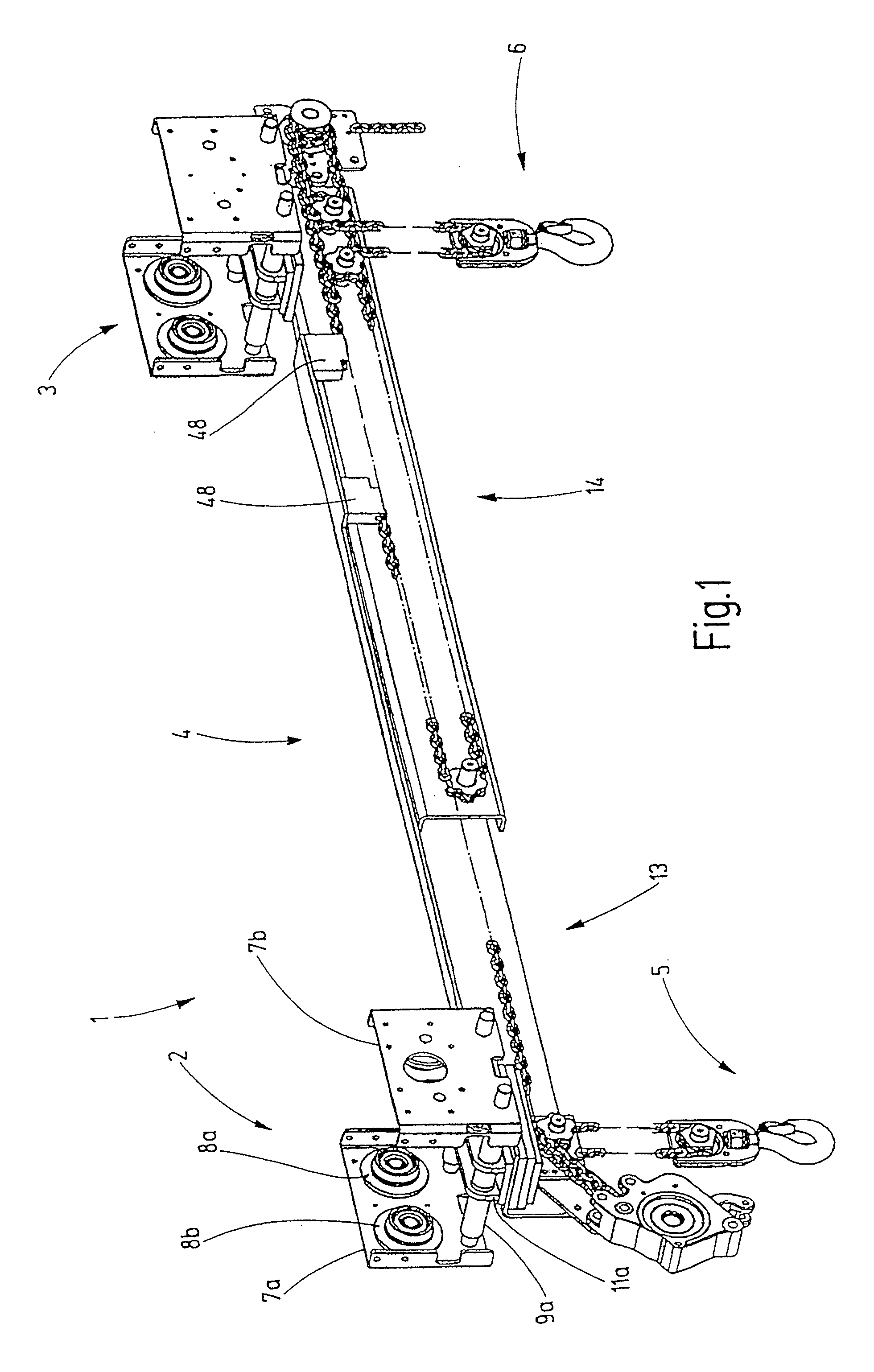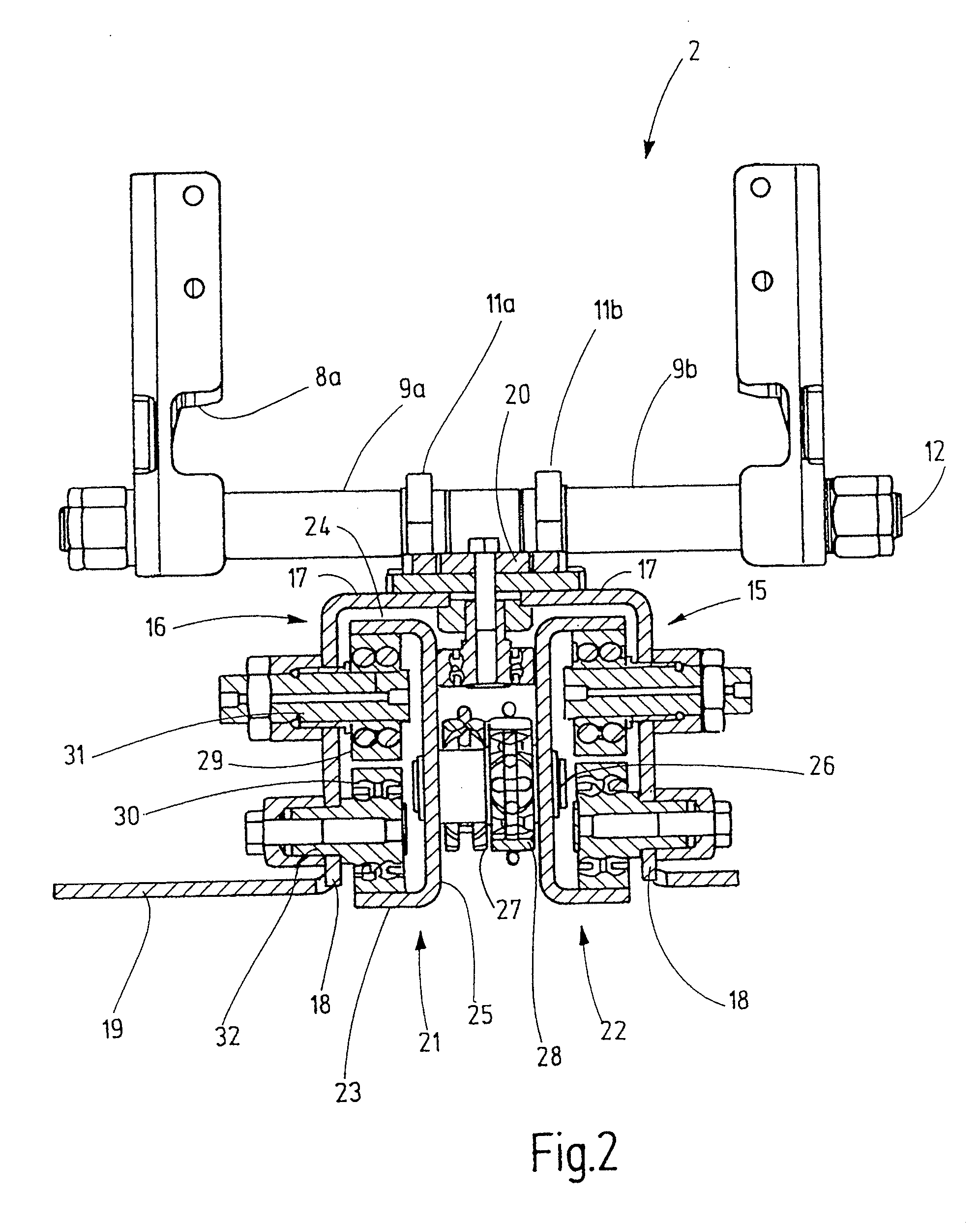Dual chain hoist arrangement
a chain hoist and chain hoist technology, applied in the direction of hoisting equipment, trolleys, load-engaging elements, etc., can solve the problems of residual length, fixed spacing between the hooks that may be excessively small or excessively large, and the need to replace the lifting beam with a new one. achieve the effect of reducing the torqu
- Summary
- Abstract
- Description
- Claims
- Application Information
AI Technical Summary
Benefits of technology
Problems solved by technology
Method used
Image
Examples
Embodiment Construction
[0024]Referring now more particularly to the drawings, there is shown an illustrative dual chain hoist 1 in accordance with the invention, which basically comprises two propelling mechanisms 2,3, a length adjustable lifting beam 4, and two hook blocks 5,6 mounted in depending fashion from opposite ends of the adjustable lifting beam 4. The illustrated propelling mechanisms 2 includes two trolley side cheeks 7a,7b that are aligned parallel to one another. The trolley side cheek 7a carries two rotatably supported flanged wheels 8a,8b, and corresponding flanged wheels are provided on the opposite inner side of the trolley side cheek 7b in the form of a mirror image relative to the flanged wheels 8a and 8b.
[0025]Through-bolts 12 are used for screwing the two trolley side cheeks 7a,7b to corresponding brackets 11a,11b with spacer elements 9a,9b therebetween. On each propelling mechanism, the two side cheeks 7a,7b are mounted on the respective lifting beam 13,14 with two sets of spacer e...
PUM
 Login to View More
Login to View More Abstract
Description
Claims
Application Information
 Login to View More
Login to View More - R&D
- Intellectual Property
- Life Sciences
- Materials
- Tech Scout
- Unparalleled Data Quality
- Higher Quality Content
- 60% Fewer Hallucinations
Browse by: Latest US Patents, China's latest patents, Technical Efficacy Thesaurus, Application Domain, Technology Topic, Popular Technical Reports.
© 2025 PatSnap. All rights reserved.Legal|Privacy policy|Modern Slavery Act Transparency Statement|Sitemap|About US| Contact US: help@patsnap.com



